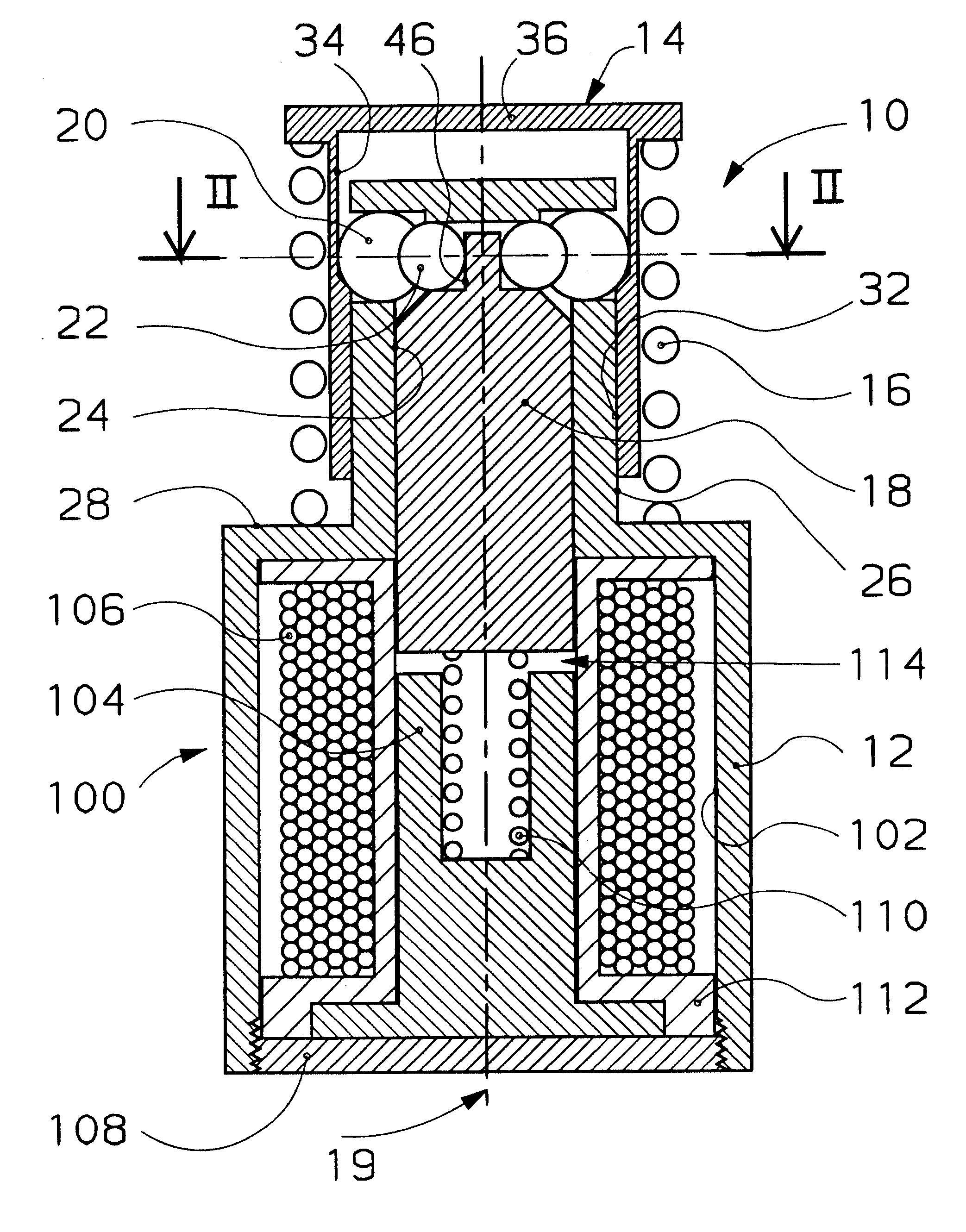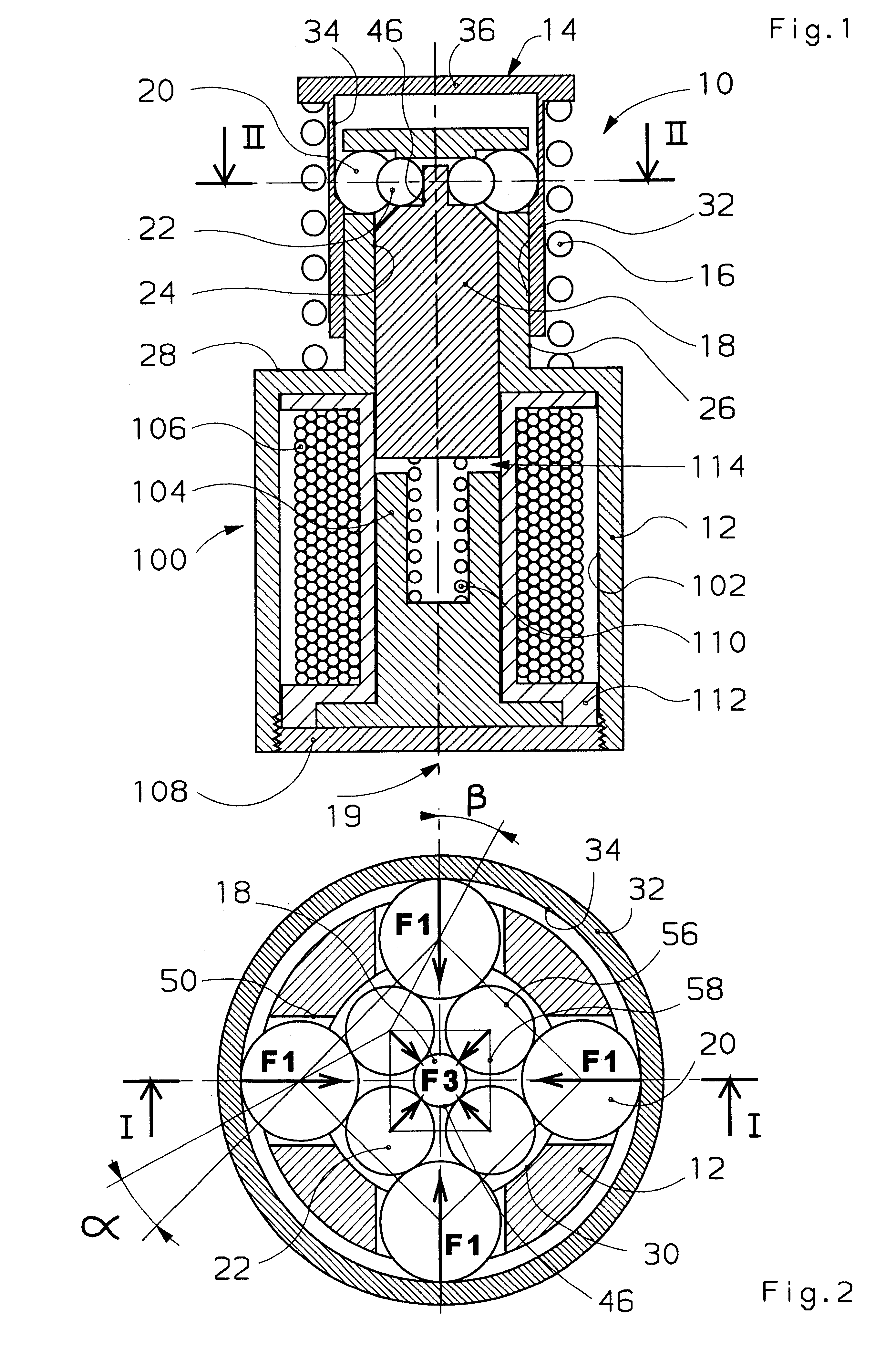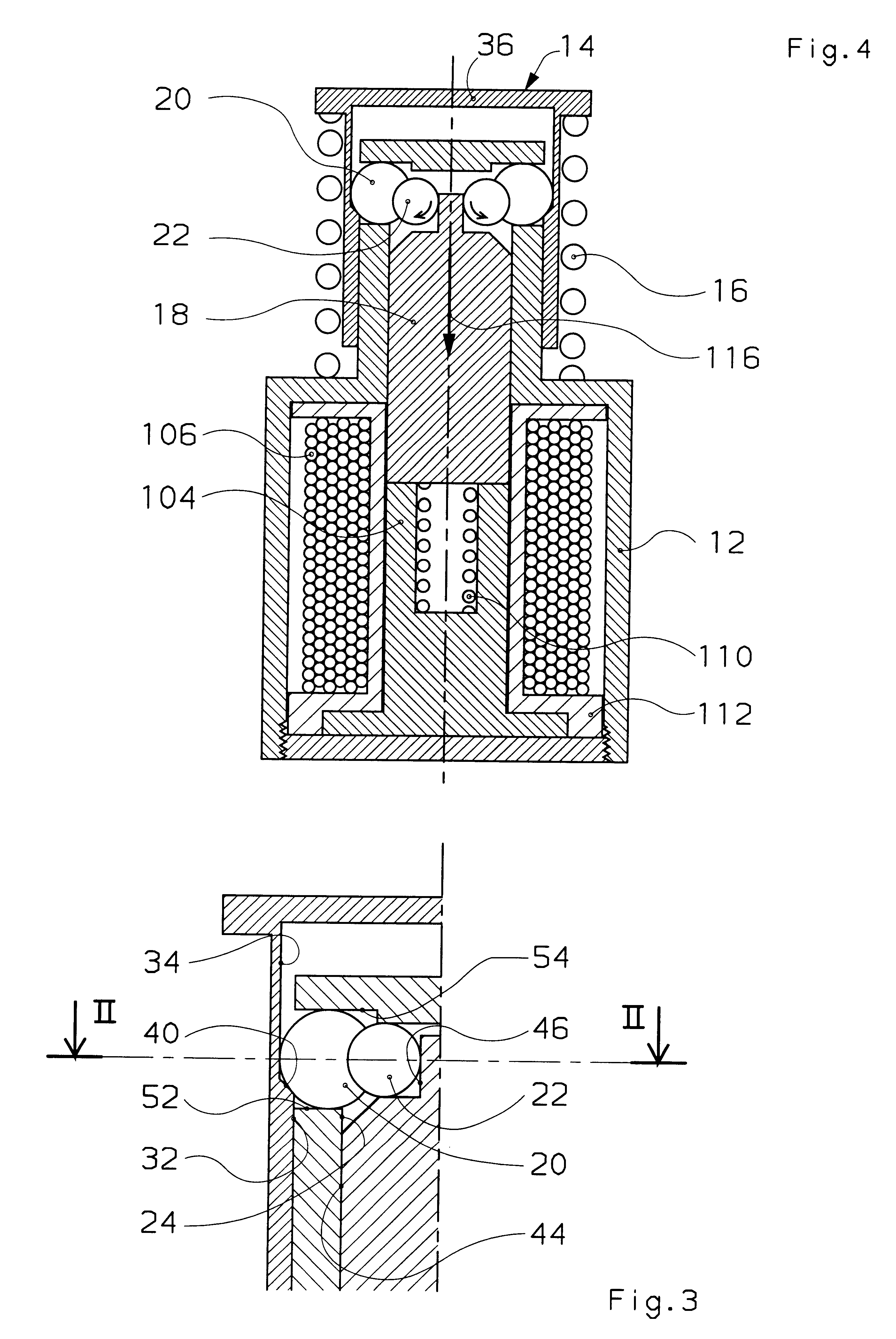Ball actuator
a technology of actuators and balls, applied in the direction of magnets, magnets, cores/yokes, etc., can solve the problems of radial forces transmitted to the rod, extreme sensitive to dimensional tolerances and wear of parts, and the latched position cannot be fully transmitted to the second ball
- Summary
- Abstract
- Description
- Claims
- Application Information
AI Technical Summary
Benefits of technology
Problems solved by technology
Method used
Image
Examples
first embodiment
It can therefore be seen that the ratio F.sub.3 / F.sub.1 is always less than 1. In the particular case considered in the invention, where n=4, we obtain: ##EQU5##
The modulus F.sub.3 of the force exerted by the control balls on the rod in the loaded position conditions the energy required for operation of the rod. By making the diameter of the rod and the diameter of the balls vary, we can make the angle .beta. in the gap, and therefore the value of F.sub.3 for a given latching force F.sub.1, vary. A wide range of actuators can therefore be obtained using more or less powerful springs without having to vary the operating energy.
The theoretical limit of the model is obtained with the purely theoretical diagram of FIG. 7 where the angle .alpha. is zero and where the force F.sub.3 transmitted to the rod 18 is nil.
The above simplified model does not take account of the dimensional differences due to the tolerances and wear of the mechanism. It should however be underlined that the contro...
second embodiment
According to a variant, not represented, of the second embodiment, it is also possible to provide a device wherein the plane containing the centers of the control balls is situated below the plane containing the centers of the detent balls, so that the control balls exert on an intermediate stop of the rod a force having an axial component tending to repel the rod against an end of travel stop. Such an actuator has a stable loaded position. To release the energy storage spring, the rod has to be driven upwards so that the control balls repel the detent balls radially towards the outside, which detent balls, in contact with a ramp of the shoulder, repel the striker axially against the force exerted by the energy storage spring. As soon as the control balls pass the dead point and are situated above the detent balls, the control balls are ejected as in the previous embodiments and the striker is released. This embodiment naturally procures the advantage of a greater stability in the l...
PUM
| Property | Measurement | Unit |
|---|---|---|
| radial forces | aaaaa | aaaaa |
| forces | aaaaa | aaaaa |
| diameter | aaaaa | aaaaa |
Abstract
Description
Claims
Application Information
 Login to View More
Login to View More - R&D
- Intellectual Property
- Life Sciences
- Materials
- Tech Scout
- Unparalleled Data Quality
- Higher Quality Content
- 60% Fewer Hallucinations
Browse by: Latest US Patents, China's latest patents, Technical Efficacy Thesaurus, Application Domain, Technology Topic, Popular Technical Reports.
© 2025 PatSnap. All rights reserved.Legal|Privacy policy|Modern Slavery Act Transparency Statement|Sitemap|About US| Contact US: help@patsnap.com



